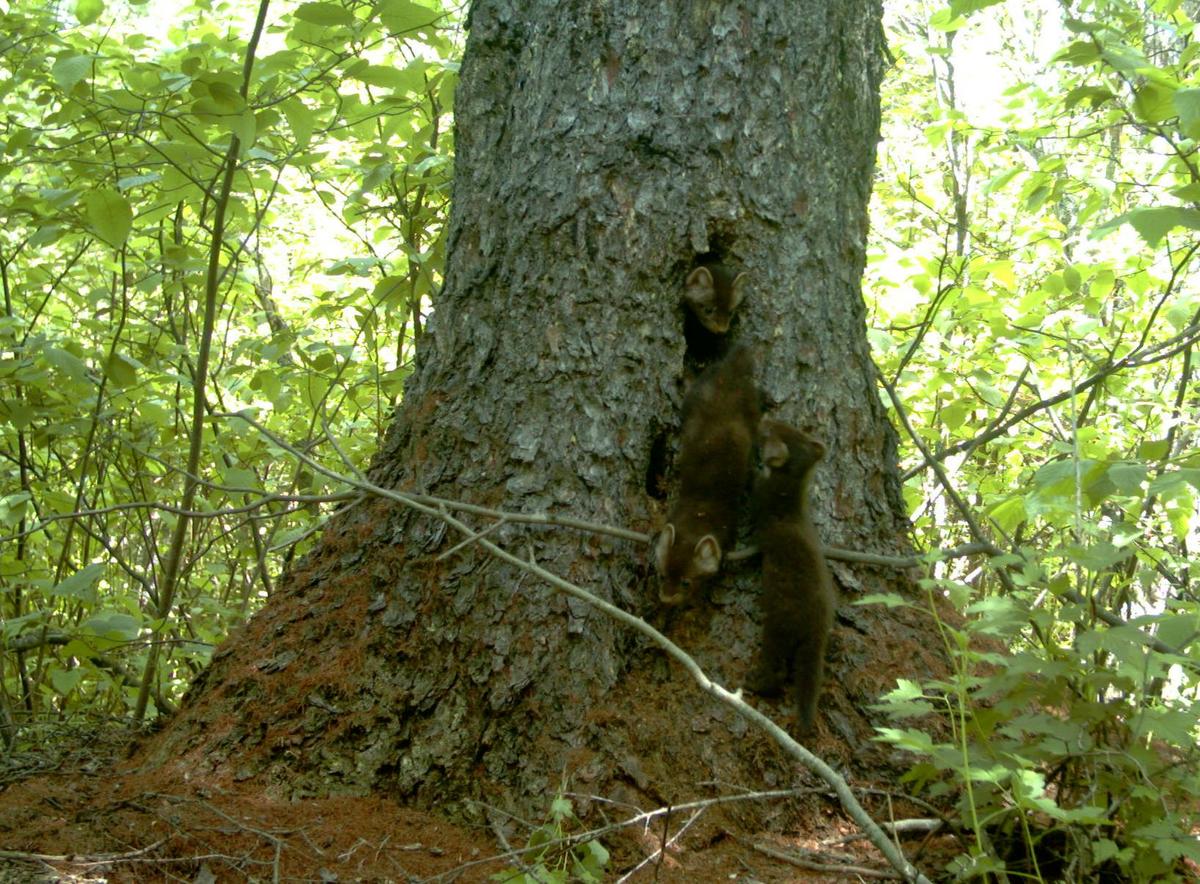Don’t let these lithe, brown-eyed fur babies fool you. The American marten is an opportunistic forest predator.
“They eat pretty much anything they can catch and put in their mouth,” said NRRI Researcher Michael Joyce. “Small mammals – mice, voles, shrews – up to a snowshoe hare.”
But it’s where these cute woodland creatures live, not what they eat, that Joyce is studying for his doctorate degree in UMD’s Integrated Biosciences program. His research is a collaboration with the Minnesota Department of Natural Resources which is concerned about the very particular habitat preferences of martens and their larger cousin, the fisher.
Martens prefer hollow logs and tree cavities as protection when they sleep and care for young. The problem is that those structures take a long time to develop. It can be upwards of 75 years for a tree to grow to maturity and develop a hollow space – whether fallen log or standing – of the right size. Because of the marten’s need for structurally complex, older forests, the DNR wants to be sure management for those forest types is carefully planned.
And, as it turns out, gathering data about the kind of forests marten prefer is the same data that foresters care about.
“Over the last five years, I spent a lot of time measuring vegetation and forest inventory plots and found variables that predict habitat use by martens,” said Joyce. “So we want to know, what areas out there are really good for martens? How much good habitat is available? This will be important information for forest harvest planning.”
It’s not that the American marten, often called a pine marten, is threatened in Minnesota. Its populations are actually doing fairly well here compared to Wisconsin, where they are listed as endangered. But the Minnesota DNR has observed a downward trend in marten populations since 2000, and responded by shortening the trapping season from a high of 16 days to a 6-day season.
Naturally, when marten fur prices are high, the harvest levels go up. For now, the fur price is down, but the fluctuating market could send prices up again.
Joyce started his research in 2011 and is using both high tech tools and low tech tromping to gather data to develop models that predict great marten habitat.
LiDAR – Light Detection and Ranging – is a remote sensing method that uses light in the form of a pulsed laser to measure variable distances. After measuring and collecting forest plot data on the ground, Joyce identified habitat variables. Now he can apply those variables to the spatially continuous data collected by LiDAR, allowing Joyce to see the whole landscape on his computer screen in high-definition detail to places his boots can’t take him.
“We can see the tree types, trails, logs on the ground… things we know are important to martens,” he explained. “Knowing what good habitat is and being able to use tools to map it should result in better forest management decisions.”
Ultimately, Joyce will be able to provide county, state and federal forest managers with the information they need to plan a variety of forest types – from old growth to young forests – to meet the needs of a variety of species.
He will be defending his doctorate thesis research on this subject in the spring of 2018.
